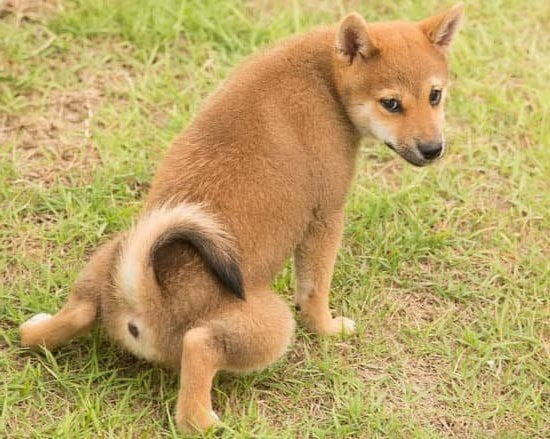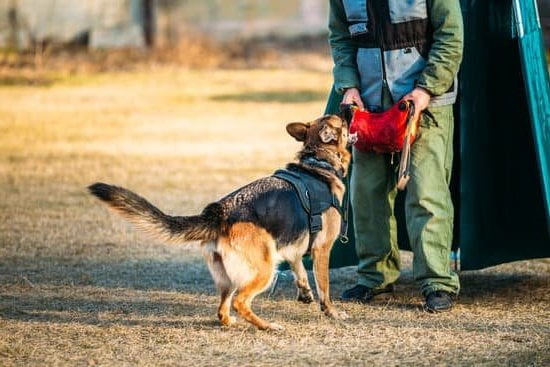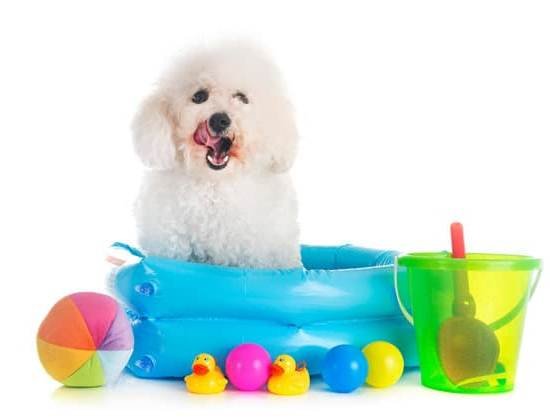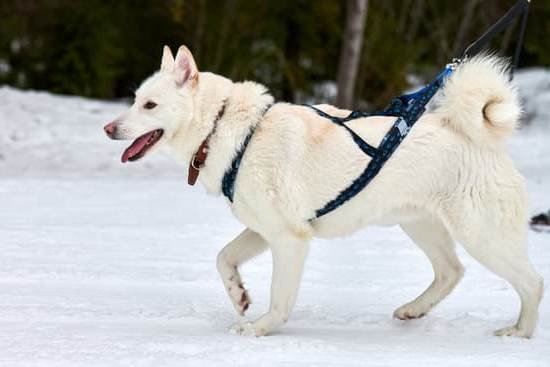There are a few things to consider when trying to stop a dog from peeing in the house. The first is whether the behavior is potty training related, or a sign of something else like a medical issue. If the dog is only peeing in one specific spot in the house, it is likely a potty training issue. If the dog is peeing all over the house, it could be a sign of a urinary tract infection, bladder infection, or other medical issue. If the dog is recently potty trained, it is important to be consistent with rules and rewards. If the dog is not recently potty trained, it may be a sign that the potty training process is not being done correctly.
The first step in potty training a dog is determining the right time to take the dog outside. This usually means taking the dog out after it eats, drinks, or wakes up from a nap. When the dog is taken outside, it is important to stay with the dog until it has peed or pooped. If the dog does not go in a timely manner, it is important to bring the dog back inside and put it in a designated potty spot. A potty spot can be an area of the house that is specifically for the dog, or it can be an area where the dog is not allowed to go. When the dog goes in the potty spot, it is important to praise the dog and give it a treat.
If the dog is not recently potty trained, it is important to start from the beginning. This means taking the dog outside on a regular schedule, and praising the dog when it goes in the right spot. If the dog has an accident in the house, it is important to not punish the dog. This will only make the dog more anxious and likely to have accidents in the future. Cleaning the mess with an enzymatic cleaner can help deter the dog from peeing in the same spot again.
How To Train Small Dogs To Stop Barking
Small Dogs are known for their adorable barks, but sometimes these little yips can get annoying. If you’re looking to train your small dog to stop barking, there are a few things you can do.
The first step is to determine why your dog is barking. Is he barking for attention? To get you to play with him? Because he’s excited? Once you know why your dog is barking, you can start to train him to stop.
If your dog is barking for attention, you can start by teaching him to “speak” and “quiet” on cue. When your dog barks, say “speak” and give him a treat. Once he’s mastered that, say “quiet” and give him a treat when he stops barking.
If your dog is barking because he’s excited, you can start by teaching him to “sit” and “stay” on cue. When your dog is barking, say “sit” and give him a treat. Once he’s mastered that, say “stay” and give him a treat when he stops barking.
If your dog is barking because he’s bored, you can start by teaching him to “leave it” on cue. When your dog is barking, say “leave it” and give him a treat when he stops barking.
It will take time and patience, but with a little training, your small dog can learn to stop barking.
How To Train Your Dog To Stop Barking On Command
There are many reasons why you might want to train your dog to stop barking on command. Maybe you live in an apartment and your dog barks excessively when someone walks by. Maybe you have a dog who barks when he’s left alone. Or maybe you just want to be able to control your dog’s barking behavior in general.
Whatever the reason, there are a few things you need to know before you can successfully train your dog to stop barking on command.
First, you need to understand why your dog is barking. Dogs bark for a variety of reasons, including excitement, fear, boredom, and aggression. Once you understand why your dog is barking, you can start to address the problem.
If your dog is barking out of excitement, you’ll need to start by teaching him to “speak” and “quiet” on cue. Once your dog is responding consistently to these commands, you can then start to use them in combination to stop your dog from barking. For example, if your dog is barking because someone is walking by, you would say “speak” and then “quiet” as soon as he starts to bark.
If your dog is barking out of fear or boredom, you’ll need to start by teaching him to “stay” on cue. Once your dog is responding consistently to this command, you can then start to use it in combination with the “quiet” command to stop your dog from barking. For example, if your dog is barking because he’s afraid of people, you would say “stay” and then “quiet” as soon as he starts to bark.
It’s important to be consistent with your commands and rewards, and to always remain calm and assertive when training your dog. If you get frustrated or angry, your dog will likely become anxious and may even start to bark more.
With patience and persistence, you can successfully train your dog to stop barking on command.
How To Train Your Dog To Stop Licking So Much
Dogs are known for being lickers. They lick people, they lick other dogs, they lick inanimate objects- it’s just what they do. But sometimes, this natural behavior can become a problem. If your dog is licking you excessively, or licking other objects or people constantly, there are a few things you can do to try and stop it.
The first step is figuring out why your dog is licking. There are a number of reasons a dog might start licking, and each one will require a different approach to fixing the issue. Some common reasons dogs lick are:
– They’re thirsty and are trying to wet their mouth and tongue
– They’re trying to groom themselves or another dog
– They’re experiencing anxiety or stress
– They’re seeking attention
– They’re experiencing pain or discomfort
Once you’ve determined why your dog is licking, you can start working on fixing the issue. If your dog is licking because they’re thirsty, make sure they always have plenty of water available. If they’re licking because they’re trying to groom themselves, you can buy them a brush or comb and teach them how to use it. If they’re licking because of anxiety or stress, you might need to get them some help from a behaviorist or trainer. And if they’re licking because of pain or discomfort, you’ll need to take them to the vet to get them checked out.
It’s important to be patient and consistent when training your dog to stop licking. If you try one method and it doesn’t work, don’t give up- keep trying until you find something that does. And be sure to give your dog lots of praise and treats when they do stop licking, so they know that they’ve done something good. With a little patience and persistence, you can help your dog stop licking so much.
How To Train A Dog To Stop Barking On Command
There are a few different methods you can use to train your dog to stop barking on command. The most important part is to be consistent with training and to be patient while your dog learns the new behavior.
One method is to use a positive reinforcement technique. This involves rewarding your dog each time they stop barking. Initially, you may need to provide the reward yourself, but eventually your dog will learn to stop barking when they hear the command, in anticipation of the reward.
You can also use a punishment technique to train your dog to stop barking. This involves disciplining your dog each time they bark, such as by scolding them or giving them a time-out. However, it’s important to note that punishment can be ineffective and can even lead to further behavioral problems, so it’s generally recommended to use positive reinforcement instead.
Whichever training method you choose, it’s important to be consistent and to keep up the training on a regular basis. It may take a while for your dog to learn the new behavior, but with patience and perseverance, you can successfully train them to stop barking on command.

Welcome to the blog! I am a professional dog trainer and have been working with dogs for many years. In this blog, I will be discussing various topics related to dog training, including tips, tricks, and advice. I hope you find this information helpful and informative. Thanks for reading!





